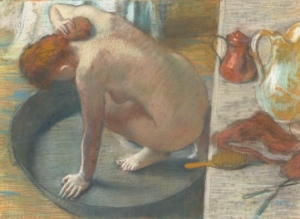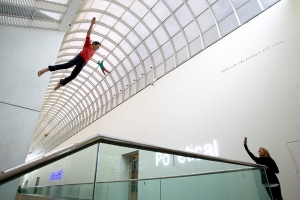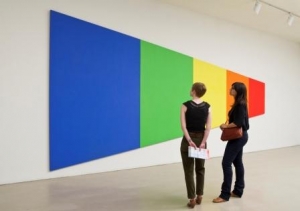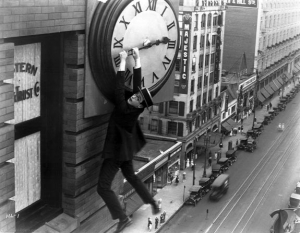|
Displaying items by tag: MFA Boston
The Museum of Fine Arts, Boston, today announced that Matthew Teitelbaum has been appointed its Ann and Graham Gund Director. Teitelbaum, who is currently the Michael and Sonja Koerner Director and CEO of the Art Gallery of Ontario in Toronto, succeeds Malcolm Rogers, who will retire when Teitelbaum assumes his role at the MFA on August 3, 2015.
Formally elected at a special meeting of the MFA’s Board of Trustees earlier today, Teitelbaum becomes the 11th director in the MFA’s 145-year history. He was selected after an international search overseen by a committee appointed by the Board.

No 19th-century artist paid closer attention to the naked female form than Edgar Degas. Yet none seemed to harbor such complicated feelings about women.
This alone makes “Degas and the Nude,’’ a new exhibition at the Museum of Fine Arts, one of the most electrifying exhibitions to open in Boston for years. The show opens to MFA members today and to the general public on Sunday.
If you come to the show with an image of Degas as the painter of pretty ballerinas and horse track scenes, be prepared to find something tougher. If, on the other hand, you come with your defenses up - convinced that Degas, along with being an anti-Semite, was also a misogynist - prepare to have these defenses weakened.
The MFA exhibition is the first museum show ever devoted to the subject of Degas’s career-long engagement with the naked human form. Organized by the MFA’s outgoing chairman of the Art of Europe, George Shackelford, along with the Musee d’Orsay’s Xavier Rey, it contains 160 works, more than a third of them lent by the Paris museum (where the show will open in March).
From the 1870s until about 10 years before his death in 1917, Degas knocked out one magnificently drawn, gauchely posed female nude after another. Only the means and the materials changed - charcoal, pastel, paint, monotype, lithograph, clay, pastel on monotype, and so on.
These now look like some of the greatest nudes in the history of Western art. Picking up on cultural currents that were gaining momentum in the mid-19th century, Degas aggressively stripped away centuries of idealization, sentimentality, and pomposity to reveal the female form as it was.
There was, however, an obsessiveness about the endeavor that can be disconcerting. You sense pride in Degas’s refusal to prettify, and relish in the way he continually contrived the most awkward-looking poses for his models. Right from the beginning, people described them as brutal, cruel, animalistic.
But Degas’s almost machine-like detachment is in constant tension with a sustained engagement that is sensual, marveling, and tactile. The effect, aesthetically, is a hot and cold dynamic unlike anything else in art.
Degas was the oldest of five children (three others died in infancy). His mother, worn out by child-bearing, died when he was 13. He was a lifelong bachelor who said he wanted to be “illustrious and unknown.’’

Last weekend, the Museum of Fine Arts, Boston, celebrated the opening of its new Linde Family Wing for Contemporary Art, which would seem to represent a major commitment to collecting and exhibiting the art of our time. It should be noted, however, that the new wing is not actually new. It is the old, I. M. Pei-designed wing from 1981, formerly used for rotating exhibitions, now refurbished, repurposed and renamed. And while a lot more contemporary art is now on view, you don’t get the feeling that the old, small-city provincialism has been replaced by a new, fiercely ambitious cosmopolitanism.
The main attraction is a 12,000-square-foot, oblong gallery, a big-box space occupied by a sprawling, uneven, crowded hodge-podge of about 240 works from the museum’s permanent collection, augmented by some blue-chip loans.
There is a beautiful moment in one part of the installation: a rhombus-shaped polyptych by Ellsworth Kelly creates a rainbow spectrum that seems to recede into virtual space. Nearby stands a narrow stele painted in shades of purple by Anne Truitt. A ball of matte stainless steel by Roni Horn rests on the floor. To the right hangs Ed Ruscha’s elegiac image of a rural fence under a gray sky intended to resemble a scratchy, noir movie frame. On the far opposite wall, a sumptuous, black-on-red Warhol painting of an electric chair presides like a bad conscience. A black polyhedron evoking a futuristic tombstone by Tony Smith completes a tableau that is as poetic as it is formally elegant.
As a whole, however, the exhibition underscores the challenge that Edward Saywell, chairman of the contemporary art department, and Jen Mergel, chief curator, face: There are too many gaps in the collection to create a credible representation of recent art history. So they opted for a thematic approach. The gallery is divided into five sections, each devoted to a different elementary topic. Regrettably the themes sound as if they were conceived by the education department to persuade the uninitiated that art is fun.
Under the heading “Art can be...” the first section includes works by Picasso, Morris Louis, Lynda Benglis and Richard Tuttle among others. It speaks to the unlimited formal possibilities of today’s art. At the start a framed card from 1961 certifies that the conceptualist Piero Manzoni, has signed the body of one Mario Diacono (a longtime Boston curator and a local hero) and thereby turned him into a work of art. A beaded curtain by Felix Gonzalez-Torres ushers visitors into the next gallery, where you will find — in addition to the arrangement around Mr. Kelly’s spectrum painting — a punchy, feminist word-and-picture montage by Barbara Kruger and a mannequin wearing a paper dress bearing a pattern of Campbell’s Soup labels. Here the question is, “What’s it about?” In other words, art is about, well, lots of different things.

This September, contemporary art will find a dynamic new home at the Museum of Fine Arts, Boston (MFA), when the Museum unveils the Linde Family Wing for Contemporary Art. Located in the building I.M. Pei designed for the MFA in 1981, the wing will include seven new galleries that will present innovative approaches to the exhibition of contemporary art within the context of the Museum’s encyclopedic collections, offering new perspectives and encouraging connections between art of the past and present.
The Henry and Lois Foster Gallery for rotating exhibitions will feature the exhibition Ellsworth Kelly: Wood Sculpture, the first museum survey of wood sculpture by the acclaimed artist. In addition, the Linde Family Wing will be a lively social space at the Museum—a destination for full engagement with contemporary culture in all its forms through art, music, performances, readings, lectures, courses, and artist demonstrations. To mark the opening, the Museum will host a lively 24-hour celebration—beginning with ticketed parties on September 17 and culminating in a free Open House on September 18—at which it will debut the MFA’s new acquisition, Christian Marclay’s 24-hour video, The Clock, in Remis Auditorium.
The Linde Family Wing, totaling more than 80,000 square feet, is housed in the Museum’s west-facing extension, where a barrel-vaulted skylight provides natural illumination throughout the wing’s two floors. It is named in recognition of the generosity of Museum benefactors Joyce Linde and her late husband, Edward Linde, and their family. The enhancement of the wing will more than triple the display of contemporary art, resulting in more than 21,000 square feet for the display of art.
“The opening of the Linde Family Wing is a transformative moment for contemporary art at the MFA,” said Malcolm Rogers, Ann and Graham Gund Director of the Museum. “The new galleries will provide a welcoming gateway for visitors to experience the excitement of contemporary art, opening new doors for the discovery of our collections. As one of the world’s greatest encyclopedic museums, the MFA can bridge past and present by placing contemporary art into a historical and global context. Thanks to the extraordinary generosity of the Linde family, longtime friends and supporters of the Museum, the MFA will be able to create a vibrant new environment for the enjoyment of contemporary art.”
www.mfa.org

After drawing large crowds at the White Cube gallery in London, the Paula Cooper Gallery in New York, the Los Angeles County Museum of Art and the Venice Biennale, Christian Marclay’s 24-hour film The Clock, which is comprised of thousands of short clips from a variety of movies that show time passing in real time, will go on view at the Museum of Fine Arts, Boston, on Sept. 17., at the opening of its contemporary art wing.
The ticket price? $200, which breaks down to about $8 per hour.
MFA officials argue that the steep admission price is to cover the cost of keeping the museum open through the night–the film will run from 7 p.m. on Sept. 17 to 7 p.m. the next day–and covering other aspects of the party, which includes food, drink and a performance by Irish artist Amanda Coogan, but the Boston Globe reports that some people are not pleased with the ticket price.
Artist and Kingston Gallery director Ilona Anderson called the price “revolting,” and added, “If they want to cultivate an audience for contemporary art, they need to make it available. It shouldn’t be exclusive.” And Ashley Lee, who writes about museum admissions fees, offered this trenchant argument: “Treating it as a gala opener and disrespecting its true, 24-hour purpose really degrades the work.”
|
|
|
|
|